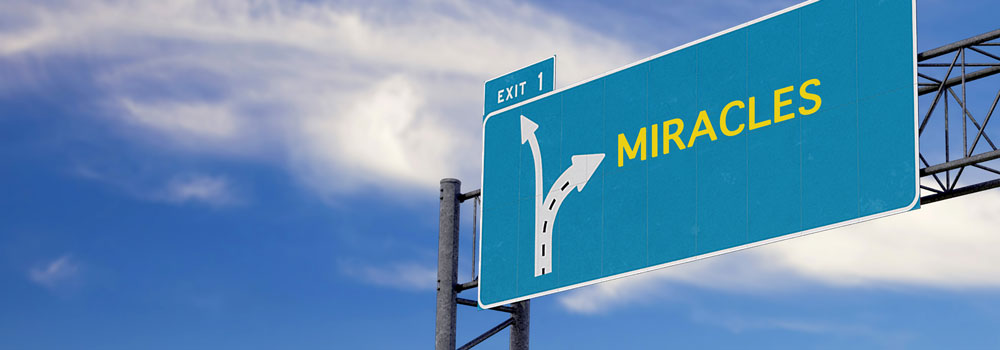
by Shari Noland | Sep 8, 2021 | Commentary, Headline News |
Tim Storey on getting over challenging interruptions in your life.
When Tim Storey met with Quincy Jones to collaborate on a creative project 25 years ago, he got an unexpected challenge to create his own miracles.
“Whatever ideas you come up with, this is the no-fault zone,” Storey recalls Jones telling him that day, “In this zone, just be miraculous. Any idea you come up with, there’s no judgment here. Now, tell me what you think.”
Storey says that for a moment, he almost forgot that he was sitting with Jones, a Grammy Award-winning songwriter, record producer, and filmmaker in his Beverly Hills mansion.
“[It was like] a river of creativity got released,” Storey, recalling the experience, told Urban Faith.
In his latest book, The Miracle Mentality, Storey, now a pastor, life coach and motivational speaker, channels that experience as he explains how miracles can help us get out of a bad situation, but also get us into a better place.
“We have to permit ourselves to be miraculous,” Storey says. “It’s okay to manifest our miraculous self. Many times, the church, or your parents, or your siblings can hold some people back from their creativity.”
Even before that meeting with Quincy Jones, the idea that we can accomplish miraculous things if we lean into what God has created us to be had been marinating in Storey’s mind.
Growing up in the church, Storey learned about miracles and faith.
As he began his research for the book he realized that many people talk about needing a miracle to get out of a bad situation but don’t always see that a miracle can get you into a better place.
In his book Storey covers parenting, love relationships, friends, work, career, money, and health. Here are six takeaways that could help us manifest our own miracles while navigating life challenges.
Activate the miracle mentality in your life
To activate the miracle mentality is to cooperate with who you truly are. Number one, you’re made in the image of God. According to the Bible, He says all these amazing things about us — we are fearfully and wonderfully made. Then it says that He’s the potter and we’re the clay, and He’s shaping us as seems best to Him.
Not only does He say that I’m made in His image, but He’s also saying that He is shaping me. I feel that the image is in me, but the Creator’s hand is also on me. What I’m doing is just cooperating with my Creator. Rather than hoping for miracles or trying to conjure up a mentality, I’m just cooperating with my Creator.
The Miracle Mentality When Life Dreams Aren’t Playing Out
In life we often have what I’ve been calling for 20 years a “life interruption.” And as you know, to be interrupted means to be disturbed. It means something barges in that we never ordered. It could be a divorce that someone didn’t ask for, an illness, a challenge with their children, a challenge with their family.
As a person who has been a pastor and a life coach for many years, I find that most people, when they have a life interruption, find themselves being interrupted by the interruption and not knowing what to do about it. But we can put ourselves into two categories: recovery and discovery.
Currently, I am going through recovery of something in my life, but it’s important that I don’t get so caught up in my recovery zone that I miss my discovery zone. My discovery zone is the unfolding of my beautiful life. The Bible says in Isaiah 46:10, “For God knows the end from the beginning, and he knows what is yet to unfold.” Too many people are folding. They’re folding and give up before they have unfolded. Don’t fold your hands and your dreams while you’re still unfolding.
The Miracle Mentality When You Are Suffering
My mother was 39 when her husband, my father, went to get food for her and never came back. He was hit by a man who ran a red light.
That changed her life forever. She was happy with this man, and everything shifted within moments. The reality is at that point, you have to go back to steps.
First, you have to sit again and learn and get educated. Then you have to stand in what you know. Then you need to walk out the principles daily. That’s where some people suffer. They do not take the time just to do the action steps every day. Well, how long is it going to take, Tim Storey? Just keep walking it out. And then what happens is you keep walking it out, you build your confidence. You begin to run. Run is a position of passion. What COVID-19 has done, it has taken the run out of most people.
Challenges like divorce could take the run out of you. We have to get to the sit, to the stand, to the walk. Get good at walking, and then many times running just will come naturally. You want to kick in the run. And then it gets even better. One more step. You’re running, and you think, “Oh, this is as good as it gets.” Nope, there’s another step. You can soar. Where you mount up with wings of eagles, and you begin to soar and do things like Ephesians 3:20 says, that are exceedingly, abundantly above all that you ask or imagine.
The Miracle Mentality When You Are Seeking a Soul Mate
Somebody taught us how life should be — that you should be married at this time and that you should never be divorced. The reality is that sometimes you have to shift your “satellite dish.” Wherever you put your satellite dish is what you pick up. If you shift it on “Everybody’s against me,” you pick that up. If you shift it towards, “I can’t believe I failed all through my twenties,” that’s what you keep picking up. We have to shift our satellite dish, and we need to begin seeing things differently.
Number one, I am a miracle. My life is a miracle. Secondly, I’m a miracle in motion. I said that to Oprah Winfrey. She loves that saying of mine — that you are a miracle in motion, because you’re a miracle. But you’re also a miracle in motion. You’re learning, and you’re growing, you’re evolving.
If you’re not in a relationship, you have to learn to embrace and be thankful for the miracle of you. And then, as you begin to understand your value, I believe that it will begin to draw people that understand your value — whether it be friendships or romantic relationships.
The Miracle Mentality When You’re in a Bad Relationship
Before we fold on any relationship, we need to check our state of mind. To quote Dr. Robert Schuller, “Don’t make big decisions in the downtime.” Before one tries to get out of a relationship, I always challenge them to check their state of mind. And as I teach in the new book, there are different states of mind.
There’s the mundane, which is like, “Oh, my life is just a habit.” There’s the messy. You don’t want to leave a good relationship just because you’ve got a messy mind. Then there’s the madness. So maybe the madness is in your mind, but maybe the madness is not in the relationship like you think. We’ve got to really check with the mundane side, the messy side, and the madness side and get back to the sober-minded side before you make the big decisions.
The Miracle Mentality When Raising Kids
One of the beautiful things about parenting is that we have the opportunity to be God’s hands extended. He is the potter and we’re the clay, and He shapes us as seems best to him. That is something that we are, as parents, trying to do from birth to at least age 18. We are doing our best to help shape and form our children in a way that’s best for their lives. It’s important that we continue to stay linked up to the Creator so we can move on His supernatural power as we’re rearing our children. When you’re not connected to the supply, to the source, that’s when you start to get frustrated and even exhausted at times in the rearing of children.

by Ramon Mayo | Sep 4, 2021 | Headline News |
Video Courtesy of Jude 3 Project
Updated from 2017
The other day I got an email from a friend on how he was getting frustrated and tired of reading books and hearing lectures on Eurocentric theology and church history. He wanted to have some color injected into his Bible college and seminary education.
It’s a story I’m all too familiar with. By the end of seminary, most people are screaming at the top of their lungs, “Let me out!” But they press on anyway because they know they have a calling and they know this is the path God has them on in order to equip them. This is even more true for those students who are of non-white ethnicity. The seminary is a far cry from their home culture and the things taught there are taught from a predominantly white historical and theological perspective. Consequently, you can feel like you are being brainwashed or indoctrinated into whiteness or at the very least just made to feel like an oddball or invisible because your experience is different from a lot of the other students. I’ve been there. And I would have lost my mind if it weren’t for these principles working themselves out in my life intentionally or unintentionally.
1. Remember why you are there
You are there because you are called. You are here because you want to soak up the knowledge to make you effective in ministry. You are there to connect with like-minded folk who may one day partner with you in ministry. Do not let the overwhelming whiteness take you off course. Learn. Soak it in. Grow.
2. Make two sets of notes
There are two sets of notes to take. Notes for the paper you will write and notes for yourself (Shout out to MK Asante). Some things will be helpful for your academic career but other things will help as you take your seminary training back home.
3. Find the alternative books
When I first started attending Fuller Theological Seminary I had the privilege of working in the library. As I put the books back on the shelves I learned about James Cone, Gustavo Gutierrez and so many others. I began reading those books even before I started classes because they spoke from a perspective I understood and was familiar with. Just the exposure alone helped me to tackle some of the lack of diversity I was experiencing.
4. Find like-minded students
There is always, at least, a handful of students of color on any campus. If you can’t find students of color then there are many white students who understand where you are coming from. Reach out and connect. It may be the best thing you have ever done.
5. Find like-minded professors
In an attempt to make their faculties more diverse, most seminaries and Christian universities have hired at least two or three non-white professors who teach from a different perspective. Go and take their classes if you have the opportunity. If you can’t take their classes then find some way to connect with them. They understand your experience and are rooting for your success. Personally, I found Dr. Ralph Watkins and Dr. Jehu Hanciles. Just their teaching and course content helped me to not lose my mind!
6. Ask thought-provoking questions
Don’t just sit in class like a lump on a log. Ask questions—thought-provoking questions. Not solely to cause trouble. Ask questions from your unique ethnic and socio-economic perspective. It will not only bless you but also those in class around you who may be going into these contexts or just those who need to have their world expanded
7. Keep a vital and dynamic relationship with God
Last but not least, keep your eyes on Jesus. Don’t stop praying. Don’t stop reading your Bible. Remember this isn’t about ethnicity. This is about God’s calling on your life.
What about you do you have any other tips to include? What was your experience in seminary like? How did you keep from losing your mind?

by Shari Noland | Sep 2, 2021 | Commentary, Headline News, Social Justice |
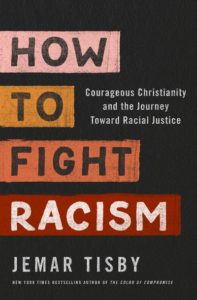 Jemar Tisby generated a lot of necessary conversation about the intersection of race, social justice, and the global church in 2019 with his best-selling book, The Color of Compromise. With that book, he laid the historical foundation of racism in the church. In the last chapter of the book, Tisby shares practical tips for fighting racism. In his new book, How to Fight Racism, Tisby continues the conversation, but this time around he provides an actual framework that churches and Christian groups can use toward racial reconciliation.
Jemar Tisby generated a lot of necessary conversation about the intersection of race, social justice, and the global church in 2019 with his best-selling book, The Color of Compromise. With that book, he laid the historical foundation of racism in the church. In the last chapter of the book, Tisby shares practical tips for fighting racism. In his new book, How to Fight Racism, Tisby continues the conversation, but this time around he provides an actual framework that churches and Christian groups can use toward racial reconciliation.
“In a lot of ways, they [the books] pair together really well. Now, they can be read independently of each other. So, I don’t want folks to get scared if they didn’t read the first one. You can dive into the second. From my perspective, the second book is what I wanted to be the first book. I was really passionate about getting in there, getting involved in doing something about racism. But in conversations with publishers and advisors and things like that, it became apparent that we really needed to lay the groundwork for the problem of racism and white supremacy in this country. Especially as it relates to the church. And basically, diagnose the problem before we jumped to solutions,” said Tisby.
Tisby’s solution is built around a model he created called the ARC of Racial Justice. ARC is an acronym for awareness, relationships, and commitment. From Trayvon Martin through the Black Lives Matter Movement and even the tumultuous racial conflicts during the Trump presidency, many people have become more acutely aware of our country’s problems centered around race. But committing to developing relationships with people who may not have the same views as you do or are coming from a different cultural perspective and, in doing so, breaking down racist structures takes more of a plan for change.
“What I’m hoping for is that this sparks ideas for people to gather a group of folks around them and say, ‘Hey, let’s do something.’ And I am really looking forward to stories trickling in over the next year and two years or whatever, so that when we do the updated and revised version of How to Fight Racism, I can include stories from the field, so to speak,” Tisby said.
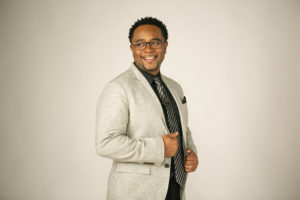 So, what about Critical Race Theory (CRT) as a way to combat racism? CRT argues that diversity training and changes in the laws are needed to combat structural obstacles created by white people that make for an unequal playing field in our society when it comes to people of color. Some people believe that CRT is a huge threat to the church. Tisby doesn’t see it that way. He says people who are dismissing it are using an old tactic — from tactics during the Civil War, when pro-slavery people used terms like “carpetbaggers” and “scallywags,” to the Jim Crow segregationists’ labels of “outside agitators,” to modern usages of Red Scare smears of “communists” and “Marxists.” Now, the label is “Critical Race Theory” proponents and is being used by people whom Tisby says want to defend a racist status quo.
So, what about Critical Race Theory (CRT) as a way to combat racism? CRT argues that diversity training and changes in the laws are needed to combat structural obstacles created by white people that make for an unequal playing field in our society when it comes to people of color. Some people believe that CRT is a huge threat to the church. Tisby doesn’t see it that way. He says people who are dismissing it are using an old tactic — from tactics during the Civil War, when pro-slavery people used terms like “carpetbaggers” and “scallywags,” to the Jim Crow segregationists’ labels of “outside agitators,” to modern usages of Red Scare smears of “communists” and “Marxists.” Now, the label is “Critical Race Theory” proponents and is being used by people whom Tisby says want to defend a racist status quo.
“All of these things are about controlling the narrative. And what happens is, if I can use a label like Critical Race Theory, I can paint it as bad, slap you with it. Then I can put you in a box, put you on the shelf, and I don’t have to actually listen to what you’re saying about racism and white supremacy,” Tisby said. “What we have to do is not get distracted from the main issue, which is Christian nationalism. It has infected so many parts of the church in the U.S. and even beyond.”
Many white Christians don’t experience racism the same way as Black people and other people of color because the Christian nationalists are in their families, in their churches, and some cases, they’ve acclimated to that way of thinking. Tisby says it’s hard for them to see it as an urgent existential problem that the marginalized and oppressed people do. That said, he has noticed that the social justice marches and movements have had an impact. White women in particular, from a 30-something who teaches Bible study at a nursing home to 70-year-old women, have reached out to him via social media and seem catalyzed to start taking action.
“It might’ve had to do with the past year or two and what they saw, especially politically. White Christians are starting to realize, ‘Oh my, like these differences are real. They’re salient. They’re in my church. They’re in my family,’” Tisby said.
It’s no easy task to be as explicit as Tisby directs white Christians about calling out Christian nationalism and white supremacy in their ranks. We know how it’s infected historically and theologically what they do. He often praises Fannie Lou Hamer’s efforts, who became a nationally known civil rights activist after seeing a presentation about voting rights at her church. Tisby admires how she always connected her activism to her faith. With that in mind, what should Black Christian activists be doing now?
“We are going to have to protect our peace. We are living in perilous times right now. And I find myself even just scrolling through Twitter or social media and whatnot, that I’ve got to take breaks because the flood of negative news, the flood of anti-Blackness, all of that stuff is too much to handle all at once. So, we will have to cultivate communities that affirm our dignity, that affirm our being made in the image of God. You got to go out and seek it and find it.”

by Allen Reynolds, UrbanFaith Editor | Sep 2, 2021 | Commentary, Headline News, Prayers & Devotionals |

There is a widespread myth in many churches that God sends generational curses on people for the sins of their parents. The myth argues that I am being punished by God because my father or mother sinned against God, didn’t repent for a sin, or did something wrong. The belief in this myth is often rooted more in experience than in the truth of God’s Word. Sometimes people feel like their difficulties must be a punishment from God, and yet the blame for that punishment rests on their parents who should have done something differently. However, Ezekiel 18:1-4 (NLT) says:
“Then another message came to me from the LORD:
“Why do you quote this proverb concerning the land of Israel: ‘The parents have eaten sour grapes, but their children’s mouths pucker at the taste’?
As surely as I live, says the Sovereign LORD, you will not quote this proverb anymore in Israel.
For all people are mine to judge—both parents and children alike. And this is my rule: The person who sins is the one who will die.”
As we read through the rest of the chapter, it is abundantly clear that the Lord does not hold the sins of parents against their children or the sins of children against their parents. In its context, this scripture was particularly important because the prophets made it clear that the judgment of God on Israel was not because of the sins of past generations.
Ezekiel and Jeremiah’s audiences in Israel were going into Babylonian captivity because of their sins against God, not because God was punishing them for the sins of every generation of Israelites up to that point (Ezekiel 18:4, Jeremiah 31:29-30). The Lord judges each person according to their own actions, not the actions of anyone else. Each person in Israel had the ability and responsibility to choose a right relationship with the Lord and to follow His commandments; it was not based on the decision of their parents.
The myth continued even in Jesus’ time. In John 9, Jesus is questioned about why a young man was born blind. The crowd thought it was because of his parents’ sins or his sins. Jesus responds that the answer is neither. He explains that it was an opportunity for God to be glorified when the man was healed (John 9:3). The sins of the man’s parents did not cause the blindness. There was no curse from God for sin.
It is important to note that the sins or wrongdoing of a parent can absolutely impact a child. The characteristics of a parent can also be passed on to his children. We do not have to look far to see how the favoritism of Isaac can be seen in Jacob, or how the infidelity of David hurts his entire family. There are a plethora of statistics that identify significant correlation between adversity and surviving a childhood with a parent who abused drugs or was incarcerated, for example.
But statistics, family history, or precedent cannot define a person, even though they may impact the individual greatly. A person who learns not to trust because of an untrustworthy parent must deal with their trust issues. But they are not punished by God for their parent’s poor choices to lie and abuse trust. In fact, in scripture we see story after story of God empowering individuals to overcome their circumstances and family trauma. Moses went from adopted orphan to prince of Egypt to deliverer from Egypt. David was rejected by his father but became king of Israel. Jonathan stood up to his father Saul in order to save David. Esther was raised by her uncle and was an outcast before she became the queen of Persia and delivered her people.
There is no generational curse for those who follow the Lord. We are free from any curse because of the blood of Jesus Christ. Jesus has freed us from the power of sin, death, hell, and the grave. We have the Holy Spirit living inside of us. We can choose to love God and receive His love. We can receive peace, joy, and freedom through Christ, regardless of what our parents may have done.
We must reject the myth of generational curses as believers. Ezekiel and Jeremiah make that clear. Jesus breaks every curse. We can put our faith in God knowing we are not being punished for the sins of our parents. We can confront our unhealthy family histories and embrace our life-giving family traditions. We can walk in freedom from the myth of generational curses through the power of Jesus Christ our Savior!


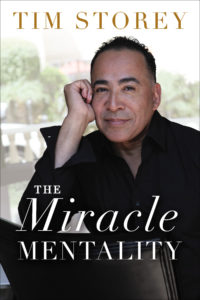
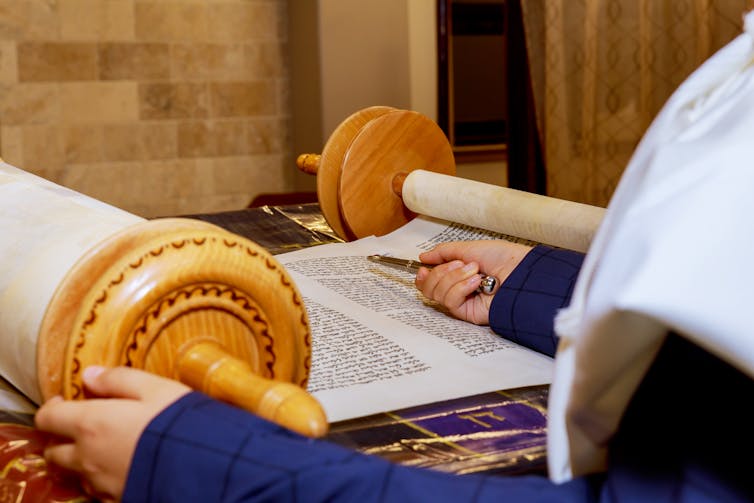



 So, what about Critical Race Theory (CRT) as a way to combat racism? CRT argues that diversity training and changes in the laws are needed to combat structural obstacles created by white people that make for an unequal playing field in our society when it comes to people of color. Some people believe that CRT is a huge threat to the church. Tisby doesn’t see it that way. He says people who are dismissing it are using an old tactic — from tactics during the Civil War, when pro-slavery people used terms like “carpetbaggers” and “scallywags,” to the Jim Crow segregationists’ labels of “outside agitators,” to modern usages of Red Scare smears of “communists” and “Marxists.” Now, the label is “Critical Race Theory” proponents and is being used by people whom Tisby says want to defend a racist status quo.
So, what about Critical Race Theory (CRT) as a way to combat racism? CRT argues that diversity training and changes in the laws are needed to combat structural obstacles created by white people that make for an unequal playing field in our society when it comes to people of color. Some people believe that CRT is a huge threat to the church. Tisby doesn’t see it that way. He says people who are dismissing it are using an old tactic — from tactics during the Civil War, when pro-slavery people used terms like “carpetbaggers” and “scallywags,” to the Jim Crow segregationists’ labels of “outside agitators,” to modern usages of Red Scare smears of “communists” and “Marxists.” Now, the label is “Critical Race Theory” proponents and is being used by people whom Tisby says want to defend a racist status quo.
